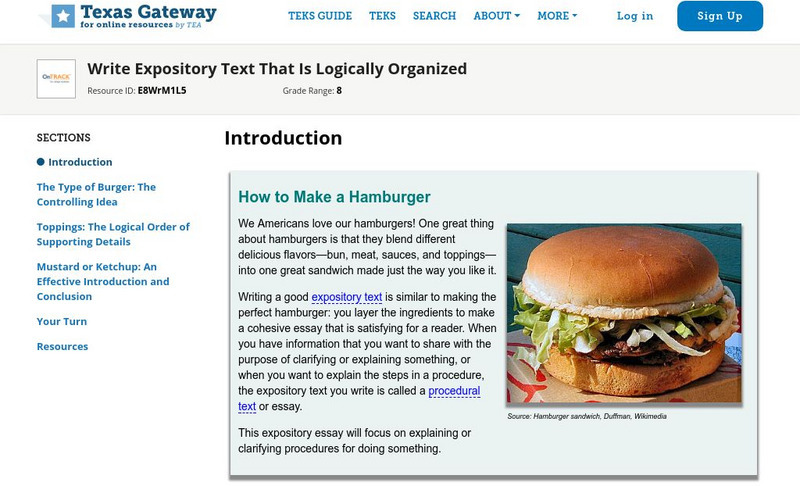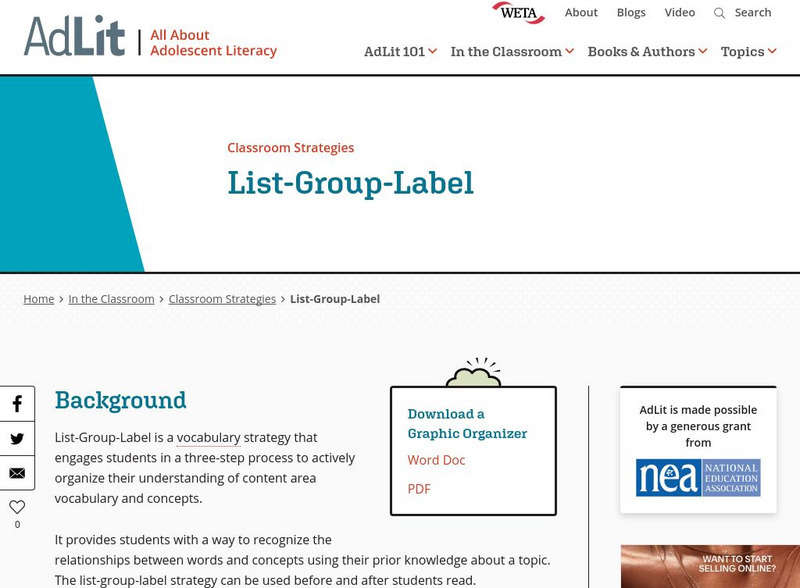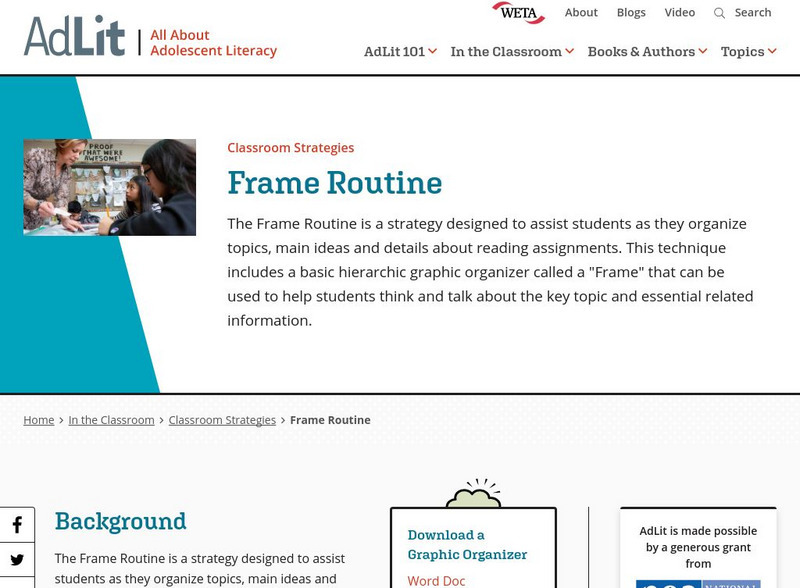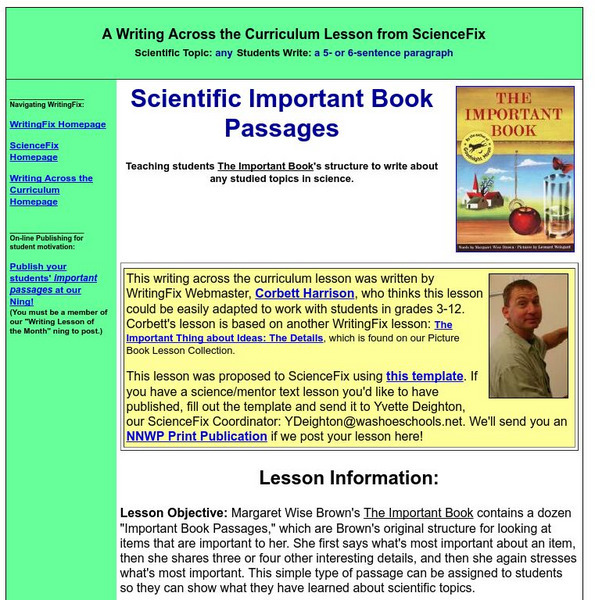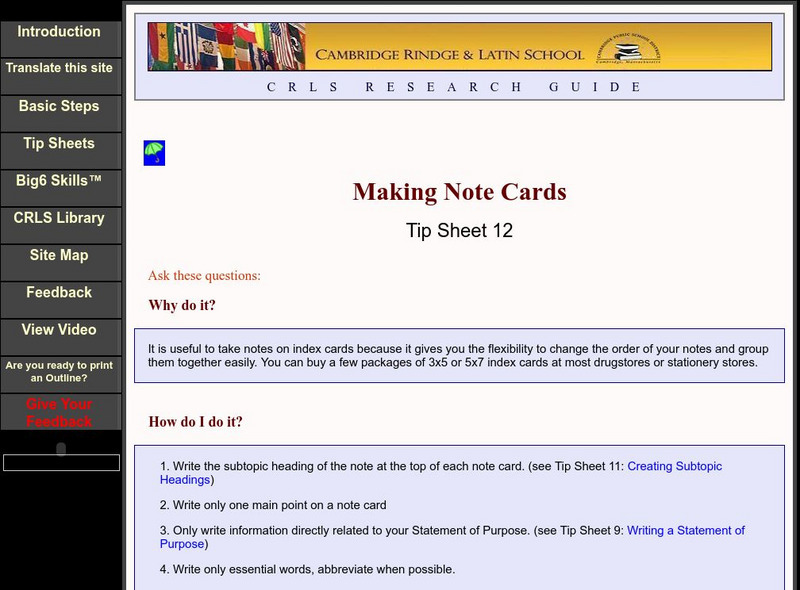Sophia Learning
Sophia: I Just Got Assigned a Paper, Now What?
This lesson focuses on what to do after being assigned a paper; it provides the basic steps to writing a paper: brainstorm topics, organize your thoughts (Venn diagrams, tree diagram examples), conduct preliminary research, create a...
Other
Lumen Learning: Memorandums
This site discusses the purpose and format of a memo and helps understand effective strategies for business memos.
Harvard University
Harvard University: Strategies for Essay Writing
This website provides a series of links to detailed information about each segment of how to write an academic essay from how to read the assignment to the final edits. Use the links to the right. W.9-10.1a claims/intro/org, W.9-10.2a...
University of Toronto (Canada)
University of Toronto: Engineering: Types of Documents
This site offers links to types of documents used to communicate information in the workplace. They include short reports, proposals, memos, case studies, and lab reports.
Online Writing Lab at Purdue University
Purdue University Owl: Writing a Research Paper
Provides a comprehensive guide to writing a professional/technical research report. Includes information on purpose, pre-writing, audience analysis, and general technical writing guidelines. For more specific information, click on the...
Thinkport Education
Thinkport: Democratic Processes
In this activity, students write informative/explanatory texts describing various aspects of the political process in the United States. This self-paced module is aligned to College and Career Ready Standards for Literacy in Social...
Texas Education Agency
Texas Gateway: Write Expository Text That Synthesizes Ideas
[Accessible by TX Educators. Free Registration/Login Required] A learning module that teaches students how to bring ideas together in an expository text in four lessons: Introduction, Analyzing Our Sources, Pulling Out the Major Points...
Texas Education Agency
Texas Gateway: Write Expository Text That Is Logically Organized
[Accessible by TX Educators. Free Registration/Login Required] A learning module that teaches students how to write an organized expository text in five lessons: Introduction, The Type of Burger: The Controlling Idea, Toppings: The...
Texas Education Agency
Texas Gateway: Use Outlines, Notetaking, Graphic Organizers, Lists
A learning module that teaches students about organizing information for an essay in four mini-lessons: Introduction, Taking Good Notes, Using Graphic Organizers, and Making Lists.
AdLit
Ad lit.org: Classroom Strategies: List Group Label
It provides students with a way to recognize the relationships between words and concepts using their prior knowledge about a topic. The list-group-label strategy can be used before and after students read.
AdLit
Ad lit.org: Classroom Strategies: Mnemonics
A mnemonic is an instructional strategy designed to help students improve their memory of important information. This technique connects new learning to prior knowledge through the use of visual and/or acoustic cues. The basic types of...
AdLit
Ad lit.org: Classroom Strategies: Concept Maps
A concept map help students visualize various connections between words or phrases and a main idea. There are several types of concept maps; some are hierarchical, while others connect information without categorizing ideas.
AdLit
Ad lit.org: Classroom Strategies: Inquiry Charts (I Charts)
The Inquiry Chart (I-Chart) is a strategy that enables students to generate meaningful questions about a topic and organize their writing. Students integrate prior knowledge or thoughts about the topic with additional information found...
AdLit
Ad lit.org: Classroom Strategies: Power Notes
Power Notes is a strategy that teaches students an efficient form of organizing information from assigned text. This technique provides students a systematic way to look for relationships within material they are reading. Power Notes...
AdLit
Ad lit.org: Classroom Strategies: Frame Routine
The Frame Routine is a strategy designed to assist students as they organize topics, main ideas and details about reading assignments. This technique includes a basic hierarchic graphic organizer called a "Frame" that can be used to help...
AdLit
Ad lit.org: Help Students Generate Ideas Through Prewriting
Learn how to model a range of prewriting techniques and introduce several mnemonics to help students organize their writing.
Writing Fix
Writing Fix: Scientific Important Book Passages
Young scholars read and examine the structure of The Important Book by Margaret Wise Brown and then follow that pattern while writing about the most important things about various scientific topics. Printable handouts and student samples...
E Reading Worksheets
E Reading Worksheets: Patterns of Organization: Chronological Order
This learning module provides an explanation of the chronological order text structure. An explanation of the chronological text structure is provided, and a video tutorial lesson is provided to supplement this lesson [1:04] Additional...
E Reading Worksheets
E Reading Worksheets: Patterns of Organization: Sequence
This learning module provides an explanation of the text structure for sequence. An explanation of the text structure for a sequence is provided, and chronological order text structure is demonstrated in a video tutorial lesson [1:24]
Cambridge Rindge & Latin School
Cambridge Rindge & Latin School: Making Note Cards
A useful site that gives information on how to make note cards when writing a research report or project. Provides examples and tips.
Cambridge Rindge & Latin School
Cambridge Rindge & Latin School: Creating Subtopic Headings
An excellent tip sheet on how to group information after brainstorming and prewriting.
Cambridge Rindge & Latin School
Cambridge Rindge & Latin School: Making an Outline
A tip sheet on how to create and outline for a research paper.
E Reading Worksheets
E Reading Worksheets: Patterns of Organization: Order of Importance
This site provides an explanation of the order of importance text structure. A diagram is provided to provide to supplement the explanation.
Other
Tonya Skinner: Web Page Evaluation Rubric
This is a good example of an evaluation rubric for a student created web page. Categories include content, page layout, graphics, navigation, design, information, and advanced features.







